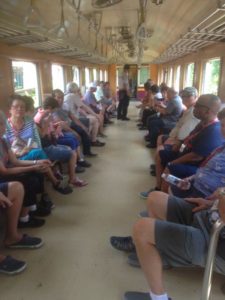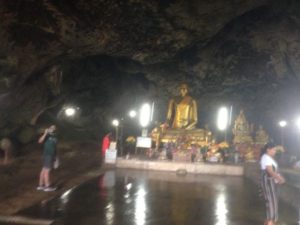We left the hotel at 8 for the drive to Hellfire Pass. Jordan and Brooke chose to stay at the hotel for a day of R&R, probably a wise decision given the heat and the steep climbs down into the pass and back up again.
The museum, funded by the Australians, who lost many men here during the construction of the railway, was closed for renovations, but we hiked down steps into a deep ravine where the Japanese insisted on cutting the rail line through solid rock. The purpose of the railway was to supply troops in Burma in order to attack the British in India.
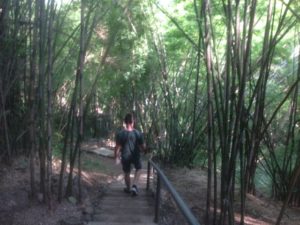
More than 60,000 Allied POW’s and 200,000 Asians were forced to work on the railway. This section was the deepest and longest cut along the entire line. The men used manual drills hammered with sledge hammers in order to install dynamite. The line was cut in two sections, one 73 meters long and 28 meters deep and the other 450 meters long and 8 meters deep. 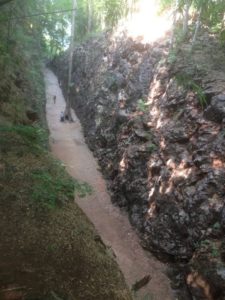
The men worked 18 hour days, the night work lit by torches. 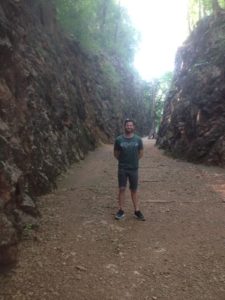
They did their best to sabotage the work by moving termite mounds near the trestles, substituting balsa wood for timbers and filling support holes with dirt to weaken them. If they were caught, the penalty was death. It is hard to imagine the hell they endured. They managed to keep track of the war effort by fabricating ingenious radios from salvaged parts.
We hiked down the trail to an overlook of the valley. The camp the POW’s stayed in was several kilometers away near the river and they had to carry supplies including cement to the site each day.
We also visited a waterfall popular with locals for picnics. Unfortunately, there has been little rain and therefore little water over the falls.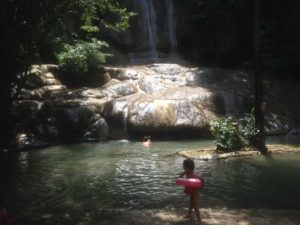
After a family style lunch near the railway station, we boarded the railway for about a half hour ride along the old narrow gauge rail line with views of the mountains and river.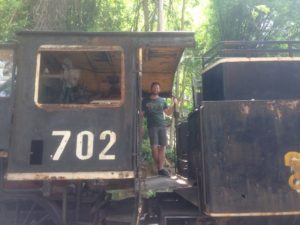
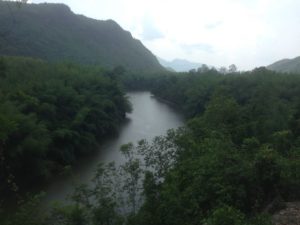
We walked from there to a vantage point where we could watch the train cross the original trestle bridge built by the prisoners. 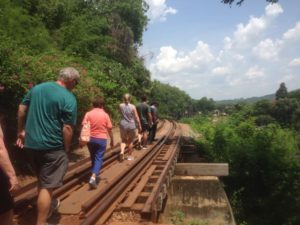
Nearby, there was a cave that was used as a hospital facility for the POW’s. Today it houses a shrine.
On the way back to the hotel, we stopped to feed the mountain monkeys.




